|

|
|
|
|
|
|
What the World
Needs Now --
Emergency
Electrical Power System (February
22, 2011)
|
Previous Issues |
|
In times of a local or perhaps even a national disaster, utility power may
be lost for a prolonged period of time. How could a family cope without electricity?
What I would like to see is a portable emergency electrical power system, which could
support a family for an extended time. The available power would be minimal but it
could be a real life saver. |
|
Many people own a gasoline or propane fueled emergency power generator.
These machines might work fine if the utility power is off for a day or two. But,
after that, when the generator’s fuel runs out, the home owner may find himself without
any electrical power. A trip to the gas station might be frustrating because nearly
all of them need electrical power to pump gas and to ring up a credit card sale.
Generators running on propane might find fuel for a while longer but as the days without
electricity continue, those supplies too will dry up. |
|
What I imagine is a portable power system on wheels. It would contain
all the things needed to supply AC power for a long time. At the heart of the system
would be one or two quality 250 watt solar panels. These 60 cell panels are perfect
for charging a 24v lead acid battery. Assuming about 6 hours of daylight each day, a
250 watt panel should be able to pump about 1500 watt-hours of energy into a battery.
This is a small fraction of the typical 25,000 watt-hours a typical house needs but with
some frugal use of the available stored energy, it could be a life saver. |
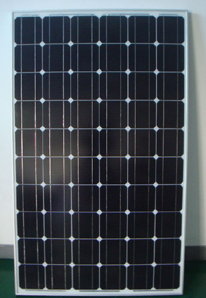 |
 |
 |
| One
250 Watt Solar Panel |
Two 250 Watt Solar Panels |
Emergency Power System on Wheels |
|
|
The figure below shows the block diagram of the electrical system for this
device. Between the solar panel and the battery would be a charge controller.
This control box would insure that the battery is not overcharged. In normal charge
mode, the solar panel acts as a current limited power source, charging the battery at a
reasonable rate. As the 24v battery voltage approaches about 28v, the charge control
box circuit would taper off the charge current, preventing damage to the battery. |
|

|
|
For a battery, a pair of 12v sealed lead acid batteries with a capacity of
at least 150 Amp-hours should work. They might be connected to a small AC powered
trickle charger during normal non-emergency days, so when the utility power goes out, the
batteries would be already fully charged. To get the most life out of these devices,
they should not be discharged below about their half capacity rating. So, although a
24v 150 Amp-hour battery may hold 3600 watt-hours they shouldn’t be discharged below 1800
watt-hours. This type of battery is about right for a solar panel, which can
only produce about 1500 watt-hours per day anyway. But, a larger battery could be
installed to capture more unused energy generated during each day. |
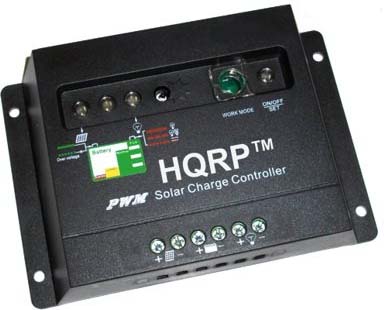 |
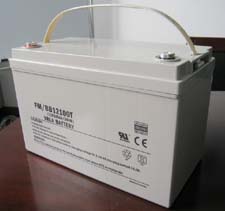 |
|
Battery Charge Controller |
12v
150 Amp-hour Lead Acid Battery |
|
| To supply AC power
to carefully chosen loads in the home, a 3000 watt pure sine inverter should work
fine. These units usually have some intelligence built in so they will
automatically disconnect from the battery, when the battery voltage drops below a
critical level |
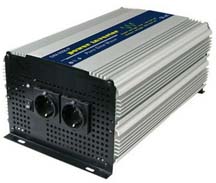 |
| |
3000 Watt Pure Sine Wave Inverter |
|
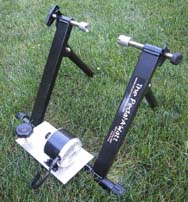 |
To increase the
available energy and to deal with cloudy days, my imagined emergency system might
include a bicycle generator. The “Pedawatt” device shown below can crank out 300
peak watts. However, the typical human may only produce about 75 watts for more than a
couple hours. Still, by taking turns, a family of four could keep the battery
charged day and night. |
| 300w
Pedal Power Generator |
|
|
| Another possible
power source would be a small wind generator. Wind often occurs after dark, so
when it does kick up, the family could take advantage of the extra energy and use
the added power to wash clothes, wash dishes or work on their computer. Some
wind generators are small enough that they could be quickly hoisted up on a pole and
attached to the side of the house. |
 |
| |
|
|
|
A long extension cord would bring in the power from the outside power
generator into the home. Additional extension cords and power strips would then
allow carefully chosen loads to be connected to the generator.
What could you power with this thing? The system I imagine would not
be powerful enough to support all the loads in the home. The power system would only
provide power to essential devices. With only 1500 watt-hours of available energy
per day, those loads would have to be chosen carefully.
A few compact fluorescent lamps (CFLs) would provide efficient lighting but
they would have to be positioned carefully, so they provide light only where it is needed.
Four 9 watt CFLs if used for 8 hours each night would chew up 72 watt hours. I think
small rechargeable battery powered flashlights and camping lanterns would be a better
choice for short term spot lighting for reading and eating a meal. An AC powered
battery charger could keep the NiMH
batteries in those devices charged during the day.
|
|
Cell phone service might still operate in some locations, even without
utility power. Many nearby buildings have cell phone systems and antenna towers
powered by solar panels. So, it might be worth keeping cell phone batteries charged
using AC powered adapters. Landline phones should run for some period of time after
a utility power outage but that service might not last. Cable TV and Internet cable
services are supposed to have backup power generators fueled by natural gas but if the
utility power is down for a long time, those services might also drop out.
Satellite TV services will continue but the receiver boxes should be
connected to the home emergency power system for only short periods of time. A large
screen TV would have to be kept unplugged in favor of a smaller device.
Refrigerators and freezers, even small ones, will also have to be kept
unplugged from the emergency power system. They just draw too much power. They
average about 1000 watt-hours per day. There are some new technology refrigerators,
which are much more efficient, but it is doubtful that the homeowner would have one of
them. RV style refrigerators which are powered by propane, might be used to keep
critical material, like medication, cool during the disaster. |
|
Microwave ovens can be used with the emergency power system. These
devices are quite efficient for quick hot meals. A family of 4 might heat up 8 meals
per day. Each meal might draw 600 watts for just 2 minutes. That means only
160 watt-hours of energy would be needed per day.
Long term computer use could tax the meager energy source. A fully
loaded desktop computer could easily suck out all the stored energy from the battery in
just three hours. Even a small notebook computer, drawing perhaps 50 watts, if used
most of the day, could draw more than 1/3 of the available energy. But, a good
notebook computer could keep the kids occupied by acting as a DVD movie player, game
player and even TV receiver. Maybe the kids could pedal the bicycle generator as
they watch a movie or use the computer so they would not draw from the solar energy
reserves. |
|
If the battery is nearly fully charged in the morning on a sunny day, it
might be possible to run a full load of wash using the family washing machine, but the
clothes would have be air dried. Daily washing will not be possible.
Home heating and air-conditioning will not be helped by the emergency power
system. A wood burning stove might be kept going in the winter for heat.
Opening some windows during the night might help cool off the house. Electric blankets,
space heaters and hair dryers would all have to be kept unplugged. Electric shavers
and toothbrushes would be OK.
I would add a good battery or hand crank powered all band radio to the list
of important devices to keep running in an emergency. Communications from the
outside world would be as important to the family as food. |
|
City water services might continue for a while but if the power outage is
widespread and continues for a long period of time, the homeowner will need to find other
sources of water. A home in the country will most likely have its own well. A
well water pump can be turned on for a few minutes each day. A pump might typically
draw 1000 watts and pump 10 gallons of water per minute. A 5 minute pump operation
would require about 100 watt-hours and should be enough to fill a 50 gallon water heater,
which could serve as a water reservoir. Gallon jugs could also be filled during pump
operation for cooking, drinking and flushing of toilets. If some other questionable
water is brought to the home, it might be wise to pump the water through a filtration
system. Reverse osmosis water systems do a great job in turning dirty water into
clean drinking water. But, the system should only be used for drinking, bathing and
cooking water. |
| Here
is how the available 1500 watt-hours of available energy might be spread out.
|
| |
6 hours Note book computer
operation = 300wh
5 minutes of well water pumping =
100wh
General lighting = 100wh
Battery charging = 20wh
Microwave oven cooking = 160wh
Misc Loads = 100wh
Total =
780wh
|
|
|
|
Note that this total is about half of the available 1500 watt-hours of
energy. So, it would be possible to use the power system for other loads.
Maybe some power could be shared with a neighbor. A small TV might be run to capture
local and national news. A water treatment system might be powered to produce potable
water from pond water. Additional water could be pumped onto a vegetable garden, to
grow some food. In summation, in times of emergency, a portable solar energy power
system could keep a family going for many months. |
|
|
|